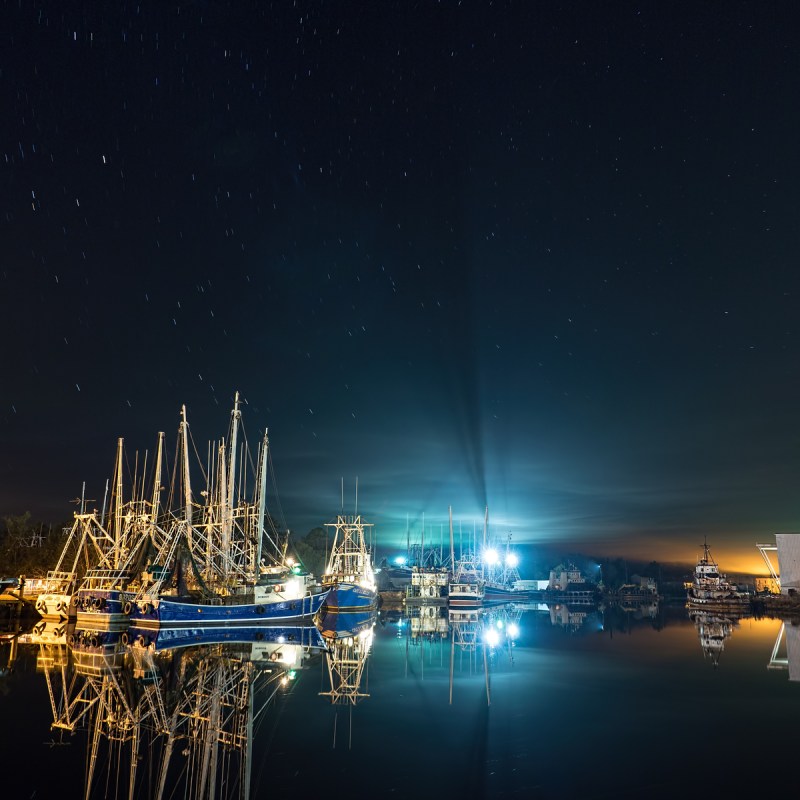
At one time in the not-too-distant past, Alabama was called “the State of Surprises.” It was a marketing idea cooked up by the state’s department of tourism — and it worked.
Videos by TravelAwaits
Tourists discovered incredible mountain landscapes, beautiful turquoise Gulf waters and snowy white beaches, and eclectic city life in the state’s “big four” cities — Mobile, Montgomery, Birmingham, and Huntsville.
But visitors to the state had one more surprise waiting for them. They discovered that Alabama also has a rich literary history.
Here are eight iconic literary landmarks you should visit on your trip through Alabama.

1. The Scott And Zelda Fitzgerald Museum, Montgomery
The name of F. Scott Fitzgerald immediately conjures up memories of his most famous novel, The Great Gatsby, a tale set in the Jazz Age that is considered by many to be the great American novel. You might not link Alabama with Fitzgerald, but think again.
Fitzgerald and his wife, Zelda, who was a Montgomery native, visited the state’s capital city many times and lived there from 1931 to 1932 while they worked on their novels Tender Is the Night and Save Me the Waltz.
Today, the ground floor of their bungalow on Felder Avenue is the only museum in the world dedicated to the writers. The museum hosts numerous events throughout the year to celebrate the authors’ lives, including annual birthday bashes in September and July.
The top floor of the home has two suites that are available for overnight stays on Airbnb.
2. Monroe County Courthouse And Museum, Monroeville
Harper Lee’s To Kill a Mockingbird is undoubtedly the most famous book to come from Alabama. The fictional town of Maycomb, where the novel takes place, is based on Monroeville, where Lee was born. In Monroeville, you can walk in the footsteps of Atticus Finch, a white attorney who defends Tom Robinson, a black man who was wrongly accused of raping a white woman.
A visit to the sleepy Southern town begins with a stop at the Monroe County Courthouse, which was painstakingly recreated for the Oscar-winning movie starring Gregory Peck. The courthouse is also the home of the Monroe County Museum, which documents the life of Lee and her dear friend, author Truman Capote.
Thousands flock to the town each year to see the Mockingbird Company’s stage production of the story.
3. Ivy Green, Tuscumbia
At only 19 months old, Helen Keller was stricken with a severe illness that left her completely deaf and blind. But seven-year-old Keller’s world suddenly lit up when Anne Sullivan tapped five letters onto the young girl’s arm while pumping cool water from a well onto her other arm. It was truly a miracle when the girl — who had never communicated before — suddenly knew the word water. By sunset, she had learned 30 more words, and by the end of her life, she had written 14 books and more than 475 speeches.
Ivy Green is the birthplace of Helen Keller. Not only is it a museum dedicated to Keller’s life and that of her “miracle worker,” Sullivan, but it is also where visitors can see the actual pump that made this miraculous transformation possible — what many describe as a profoundly moving experience.
Contact Ivy Green for the latest hours and admission fee. The play The Miracle Worker is performed on the grounds from June through mid-July. The best time to visit is the last weekend of June, when the annual Helen Keller Festival is held in Spring Park.

4. Bayou La Batre
“My mom always said life was like a box of chocolates. You never know what you’re gonna get.” Who doesn’t remember that line from the 1994 movie Forrest Gump? The Oscar-winning movie was based on a 1986 novel that The New York Times described as “the picaresque adventures of an Alabama man who stumbles through contemporary American history with an IQ of 70 and a headful of folksy wisdom.”
The novel was written by author, journalist, and historian Winston Groom, who grew up in Mobile and eventually moved to the eastern shore of Mobile Bay to Fairhope. One of the memorable parts of the story is when Forrest heads to the town of Bayou La Batre, just west of Mobile, to fulfill the dream of his late friend Bubba Blue to become a shrimper.
The small fishing village welcomes visitors who want to walk in Forrest’s shoes and offers up some of the freshest shrimp and seafood anywhere along the Gulf Coast. Take in the view of the shrimp boats setting sail or returning home backlit by a stunning sunrise or sunset, be a part of the festive Blessing of the Fleet, and then pay a visit to one of the many seafood markets to bring home a delicious catch fresh off the boat. Better yet, sample seafood at one of Bayou’s restaurants, like the Bayou Seafood Company, Cudjo Seafood, or the Catalina Restaurant.
5. Church Street Graveyard, Mobile
Talk about a Renaissance man. Writer, editor, set and costume designer, member of the Civilian Conservation Corps, puppeteer, chef, World War II cryptologist — Eugene Walter was all that and more.
Walter’s writing was eclectic, ranging from the novel The Untidy Pilgrim (which won the Lippincott Fiction Prize for Young Novelists in 1952) to cookbooks like The Happy Table of Eugene Walter to poetry as found in his 1953 collection, Monkey Poems.
But no matter where he traveled in the world, Walter delighted in telling the people he met that he always carried a shoebox of Alabama red clay with him.
Walter died in 1998, and with special permission from the Mobile City Council, he was buried in the city’s oldest cemetery, the Church Street Graveyard. Whether you are visiting the Port City for Mardi Gras, the Senior Bowl, or just to soak in its unique multicultural vibe, visit the cemetery to pay your respects to Mobile’s Renaissance man, Eugene Walter.
6. Weeden House Museum, Huntsville
Maria Howard Weeden was born in Huntsville in 1898 in an elegant home at the corner of Gates Avenue Southeast and Green Street Southeast. Here, the young woman wrote captivating poetry that brought to life delicate images of flowers and the world around her. In particular, she highlighted the beauty found in the people of the area, most notably that of Huntsville’s African American population.
Her poetry appeared in a number of books, including Shadows on the Wall, Songs of the Old South, and Bandanna Ballads. The latter was used by David O. Selznick as a guide to costume design for the African American actors in the movie Gone with the Wind.
The Weeden family lived in the home until 1956. Not long after, it was turned into a fascinating museum tracing the poet’s life and works.
7. Kathryn Tucker Windham Museum, Thomasville
The life of one of Alabama’s great storytellers, Kathryn Tucker Windham, is remembered at the Kathryn Tucker Windham Museum in Thomasville, just 90 miles north of Mobile.
Windham was a journalist, photographer, and the author of 24 books, including the popular 13 Alabama Ghosts and Jeffrey, a collection of suspenseful and spooky tales of Alabama history and folklore.
The museum is located in the library of the Coastal Alabama Community College in Thomasville and traces the writer’s childhood. The exhibits include many of Windham’s recorded stories that visitors can listen to and be swept away into the world of the Deep South. Admission is free.
8. Irondale Cafe, Irondale
Actress Fannie Flagg, who hails from Birmingham, is known for many movie and television roles, but she has also penned 11 books. Fried Green Tomatoes at the Whistle Stop Cafe, an endearing tale of friendship over the years in the small fictional town of Whistle Stop, Alabama, centers on a small diner called the Whistle Stop Cafe. The 1987 book was later made into a hit movie starring Jessica Tandy and Kathy Bates.
How would you like to eat at the Whistle Stop? Well, you can. The Irondale Cafe in Irondale was the inspiration for the Whistle Stop. First opened in 1928 as a small hot dog stand, the cafe has changed hands over the years, but it still offers up great Southern cooking (yes, including fried green tomatoes) and some real Southern hospitality.
Plan your visit for the first weekend of October to be a part of The Whistle Stop Festival, a street festival bursting with fun, food, music, and dancing. Admission is free.
